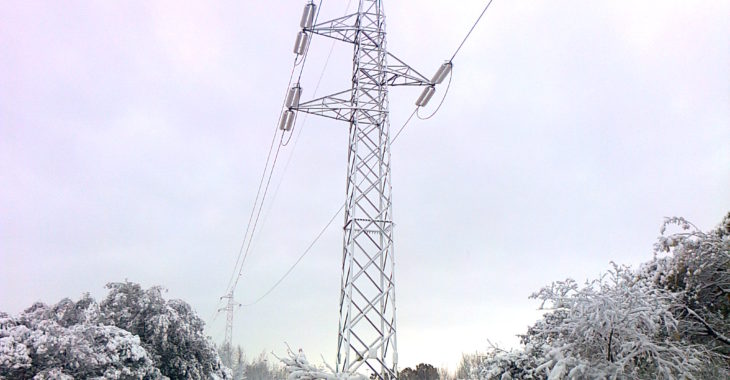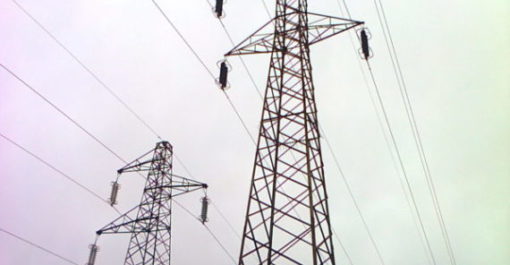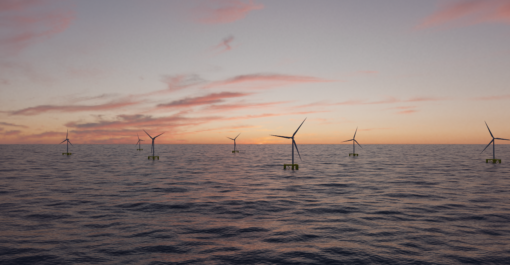A settembre i consumi elettrici italiani sono tornati sui valori di un anno fa, dopo sei mesi di forte contrazione per l’emergenza sanitaria da Covid-19.
Terna, la società che gestisce la rete elettrica nazionale ad alta e altissima tensione, ha registrato una richiesta di energia pari a 26,6 miliardi di kWh, un dato in linea con quello di settembre del 2019. Le fonti rinnovabili hanno coperto il 36% della domanda, rispetto al 33% del settembre di un anno fa.
Nel mese di settembre 2020 la domanda di energia elettrica è stata soddisfatta per il 92,2% con produzione nazionale e per la quota restante (7,8%) dal saldo dell’energia scambiata con l’estero.
In dettaglio, la produzione nazionale netta (24,7 miliardi di kWh) è risultata in aumento del 3% rispetto a settembre del 2019. In crescita le fonti di produzione eolica (+16,3%), idrica (+12,3) e fotovoltaica (+5,1%).
In flessione la fonte di produzione geotermica (-3,2), sostanzialmente stazionaria quella termica (-0,1%).
A livello territoriale, la variazione tendenziale di settembre 2020 è risultata negativa al Nord (-1,2%) e positiva sia al Centro (+1,2%) sia al Sud e nelle Isole (+1,6%).
Terna ha elaborato per la prima volta un indice settimanale (IMCEI) che prende in esame e monitora in maniera diretta i consumi industriali di circa 530 clienti cosiddetti energivori connessi alla rete di trasmissione elettrica nazionale.
Si tratta di grandi industrie dei settori cemento, calce e gesso, siderurgia, chimica, meccanica, mezzi di trasporto, alimentari, cartaria, ceramica e vetraria, metalli non ferrosi.
Analizzando le misure di Terna, nel mese di settembre l’IMCEI continua a registrare un recupero graduale iniziato già nei mesi estivi, rispetto alle variazioni negative a “due cifre” che avevano interessato i mesi del lockdown.
Il campione dei consumi dei clienti industriali monitorato da Terna, pur facendo registrare una flessione rispetto a settembre dello scorso anno, appare infatti in ripresa rispetto ai mesi precedenti.
Il recupero è stato guidato da raffinerie e cockerie (+42,4%), cartiere (+29,6%), imprese produttrici di materiali da costruzione (+9,7%) e chimiche (+1,5%), mentre sul dato complessivo ha influito negativamente il comparto siderurgico (-9%).
Nei primi nove mesi del 2020 la domanda elettrica risulta ancora in flessione (-6,9%) rispetto al corrispondente periodo del 2019 (in termini rettificati è -6,8%). Da gennaio a settembre le fonti rinnovabili hanno coperto il 40% della domanda elettrica (36% nel 2019).
In termini congiunturali, il valore destagionalizzato e corretto dagli effetti di calendario e temperatura dell’energia elettrica richiesta a settembre non ha registrato variazioni rispetto ad agosto, portando il profilo del trend su un andamento stazionario.
Il terzo trimestre ha fatto registrare un rimbalzo dell’11,8% rispetto al trimestre precedente, dopo i primi due trimestri dell’anno in flessione.
L’analisi dettagliata della domanda elettrica mensile provvisoria del 2020 è disponibile nella pubblicazione “Rapporto Mensile sul Sistema Elettrico”, consultabile alla voce “Sistema elettrico >> Dispacciamento >> Dati esercizio” del sito www.terna.it.
I dati in tempo reale sull’esercizio del sistema elettrico nazionale sono inoltre consultabili sull’app di Terna disponibili sui principali store.
https://play.google.com/store/apps/details?id=it.terna.energia&hl=it
https://apps.apple.com/it/app/terna/id1458535498
Demand at 26.6 billion kWh: value in line with 2019
TERNA: SEPTEMBER SEES RECOVERY OF ELECTRICITY CONSUMPTION IN ITALY
Circumstances rebound by 11.8% in the third quarter compared to the previous quarter. Wind, solar and hydroelectric production are growing: renewables covered 36% of monthly demand.
The IMCEI Index shows signs of gradual recovery of major industrial customers
Rome, 11 October 2020 – In September, Italian electricity consumption returned to values of the previous year, after six months of sharp decline due to the COVID-19 health crisis. Terna, the company that manages the high and extra-high voltage electricity grid, recorded an energy demand of 26.6 billion kWh, a figure in line with data from September 2019. Renewable sources covered 36% of the demand, compared to 33% in September last year.
In September 2020, 92.2% of the electricity demand was met with domestic production, and the remaining 7.8% was met with the balance of electricity exchanged with foreign countries. More specifically, the net national production (24.7 billion kWh) has increased by 3% compared to September 2019. Wind (+16.3%), hydroelectric (+12.3%) and photovoltaic (+5.1%) energy production show growth. Geothermal production is decreasing (-3.2), and thermal production has essential remained the same (-0.1%).
At the regional level, the September 2020 variation trend was negative in the North (-1.2%), but positive both in Central Italy (+1.2%) and in the South (+1.6%).
For the first time, Terna has developed a weekly index (IMCEI) which directly examines and monitors the industrial consumption of approximately 530 so-called energy-intensive customers connected to the national electricity transmission grid. These are large industries in the following industries: cement, lime and gypsum; steel; chemical; mechanical; transportation; food; paper; ceramic and glass; non-ferrous metals. Analysing the measures Terna has taken, in September the IMCEI continued to record a gradual recovery that began in the summer months, compared to the negative “double-digit” changes that affected the months of lockdown.
The consumption sample of industrial clients monitored by Terna, while recording a decrease compared to September of last year, appears, in fact, to be recovering compared to previous months. The recovery was led by refineries and cokeries (+42.4%), paper mills (+29.6%), companies producing construction materials (+9.7%) and chemicals (+1.5%), while the steel sector had a negative impact on the overall figure (-9%).
In the first 9 months of 2020, electricity demand is still down (-6.9%) compared to the corresponding period of 2019 (in adjusted terms it is -6.8%). From January to September renewable sources covered 40% of electricity demand (36% in 2019).
In economic terms, the value adjusted for seasonal, calendar and temperature effects of the electricity demand in September did not change compared to August, making the trend profile generally stable. The third quarter recorded a rebound of 11.8% compared to the previous quarter, after a decline during the first two quarters of the year.
A detailed analysis of provisional 2020 monthly electricity demand is available in the publication “Monthly Report on the Electricity System”, under the section “Electric System>>Dispatching>>Operating Data” at www.terna.it.
Real-time data on the operation of the national electricity system can also be consulted on the Terna app available in the main app stores.
https://play.google.com/store/apps/details?id=it.terna.energia&hl=it







